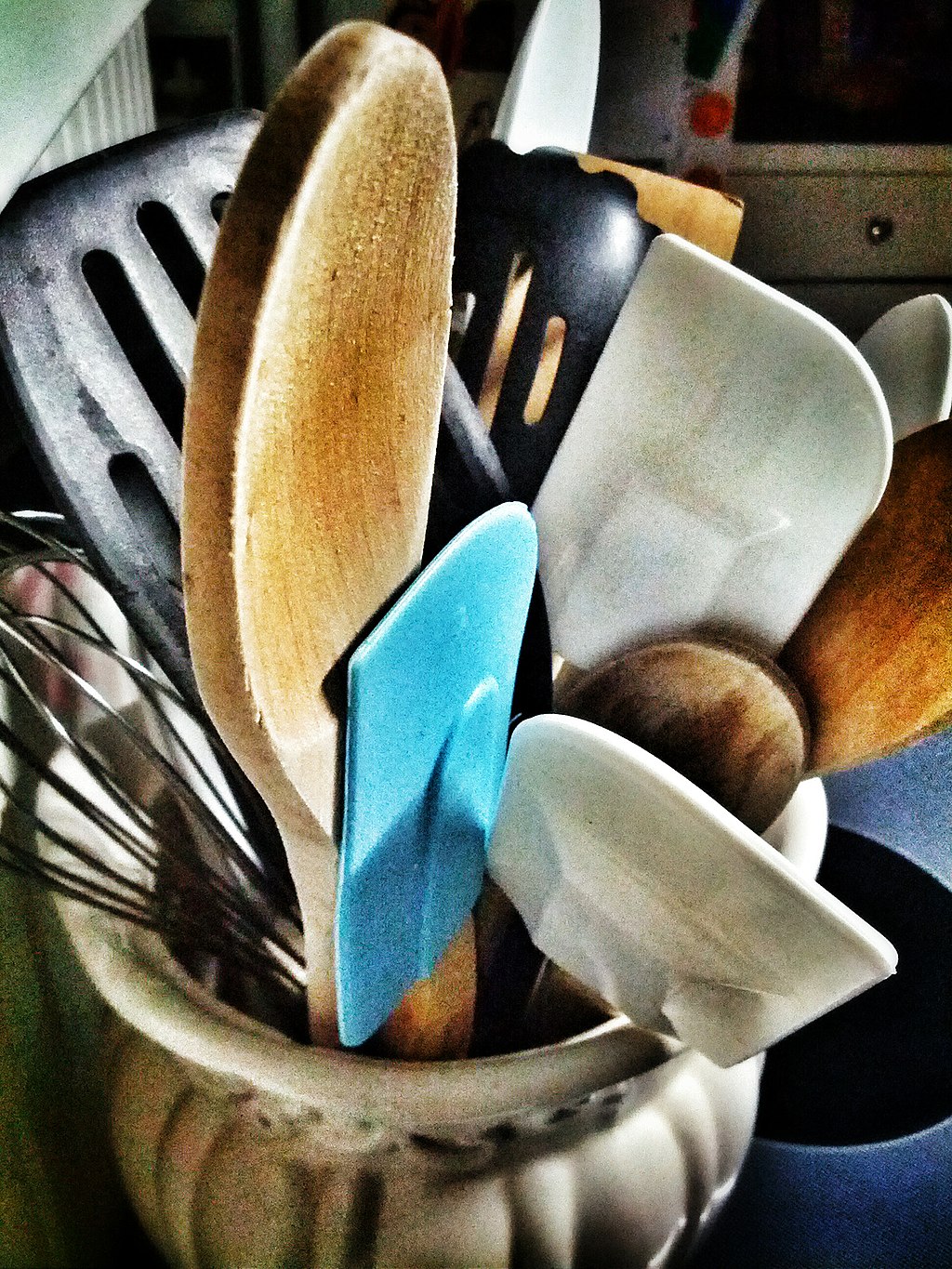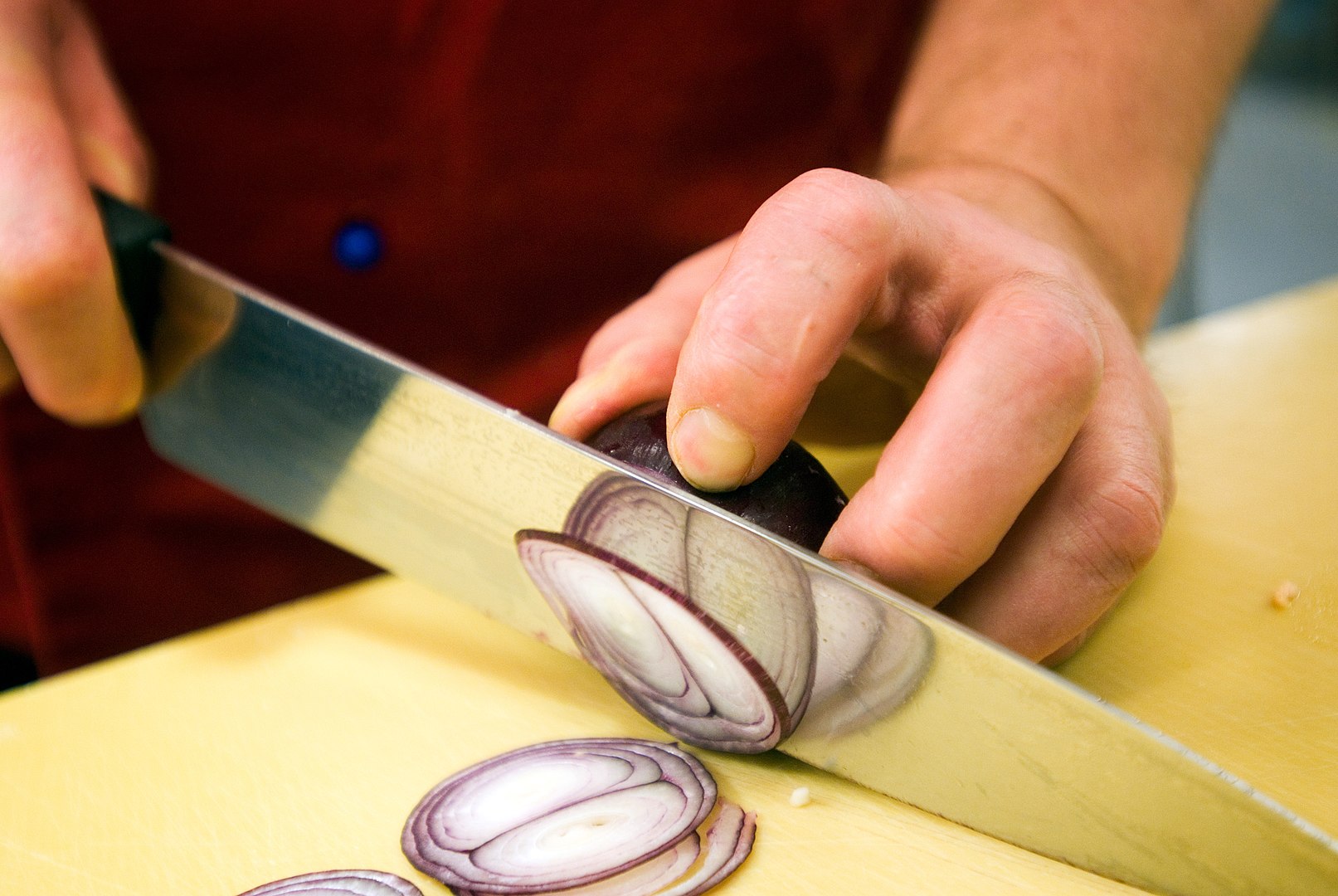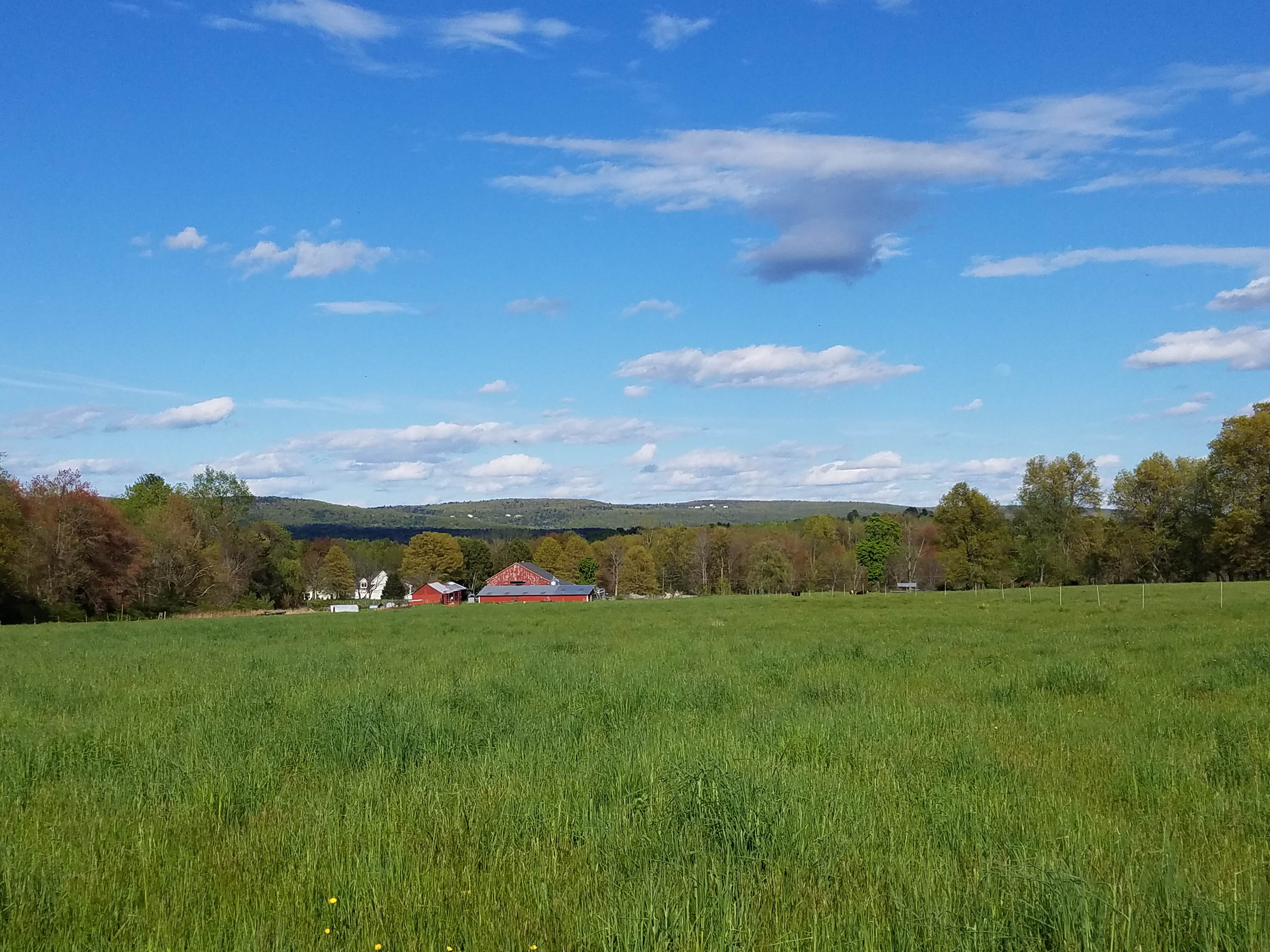Setting up a kitchen

Kitchen Utensils by Dave Graham. Source: https://commons.wikimedia.org/wiki/File:Kitchen_Utensils_(27982289).jpeg
One of the most important things you can do to make your experience in the kitchen fun instead of frustrating is to make sure that you have the proper tools. Although many tools can be improvised (yes, you can drain your pasta with a pot lid instead of a colander) at the end of the day you will have more fun and be less stressed in the kitchen if you have the right tools for the job. Most of these items are not hard to come by – a trip to the thrift store or a yard sale will at least get you started, and the Hampstore is also selling a variety of kitchen items to provide some key essentials.
In our opinion, good quality cooking tools are a long-term investment. A good chef’s knife will last you for years, and a heavy-bottomed skillet will help prevent countless scorched dinners. That said, higher quality tools tend to cost more money (esp. if bought new), and if you are living with a whole bunch of people who don’t care about cooking or respect your tools, then you might want to go for cheaper options just to save yourself a few bucks and some arguments with your housemates.

A chef’s knife. Photo: Matlagning_(2) By Johannes Jansson. Source: https://commons.wikimedia.org/wiki/File:Matlagning_(2).jpg
That said, this is the list that we would recommend. Multiple skillets and pots are better than just one of each and some things (like colanders) just don’t need to be duplicated, so it can be a good idea to coordinate with your mod mates to see who is bringing what. Also, there are plenty of other things that are useful that didn’t make this list, so if you have tools that you really love to use (like a rice cooker or a pasta maker, for instance) of course you should bring those as well.
Basic tools
- Good quality chef’s knife (usually 8″ or 10″), paring knife (3″-4″), serrated bread knife
- Knife honer – that long metal rod with a handle that you always thought was a sharpener. We’ll show you how to use it in a later posting.
- Knife sharpener – you will only need this a few times a year, but you’ll need it eventually
- Grater – box or flat style
- Large solid and slotted spoons for stirring
- Pasta grabber and/or tongs
- Soup ladle
- Metal spatula for flipping
- Silicone/rubber spatula for scraping
- Good, medium-sized skillet (heavy-bottomed steel or cast iron, avoid glass or non-stick*)
- Large heavy-bottomed metal pot with lid, big enough for pasta or soup
- Cutting board
- Measuring cup(s) and spoons
- Cookie sheet
- Baking pan (for brownies, lasagna, etc.)
- Cooling rack and/or trivets – to keep hot pans off your counter tops
- Colander
- Mixing bowls (often come in a set of 3, get at least 1 medium or large)
- Whisk
- Can opener and bottle opener
- Vegetable peeler
- Scissors
- Garlic press
- Salad spinner – optional
- Pot holders
- Kitchen towels
- Apron
- Silverware sorting tray
- Aluminum foil, plastic wrap, ziplock-style baggies, garbage bags
- Storage containers (tupperware, glass, re-usable takeout containers, etc.)
- Sponges, scrubbies, and dish soap
- Dish drainer – rack and tray
- Several durable, reusable shopping bags – necessary for picking up CSA shares!
- Basket or other breathable container to store garlic and onions
- Compost container if you have a place to put compost
Common additional baking items *
- Pie pan
- Round cake pan
- Bread loaf pan
- Muffin tin
- Electric hand mixer
- Rolling pin
- Cookie cutters
- Wax paper
Common appliances
- Microwave
- Toaster and/or toaster oven
- Coffee maker
- Tea kettle
- Blender (immersion or regular)
- Crock pot or instapot
- Food processor
*Note: We strongly recommend avoiding buying anything with a non-stick coating, which is common on skillets, pots, and bakeware. When overheated, the nonstick chemicals can release toxic vapors. Additionally, as the coating starts to wear off, the flakes can wind up in your food – theoretically not dangerous, but definitely gross. Instead, make sure your pots and pans are heavy-bottomed steel or cast iron and that the bottom is thoroughly coated with oil before use, which will help prevent food from sticking and/or burning. We will provide a lesson on maintaining cast-iron cookware in a later post.
We also recommend avoiding glass cooking or bakeware. Hot glass can shatter, sometimes explosively, when it comes in contact with cold water, which is a very easy mistake to make – usually when you dump your hot pan in the sink without thinking about it. On the whole, metal is sturdier, doesn’t usually chip or crack, and is generally better able to withstand the rigors of the kitchen.


Pingback: Food, Farm, and Sustainability » Knife skills – slicing, sharpening, and The Claw!!!